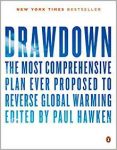This ran in the Charleston Gazette 7/19/04
Residents pay for more than what’s on their electric bills
We who complain about the ravages of the mining industry have long been told that we must tolerate the environmental damage because of jobs. Thanks to the hyper-destructive modern methods of mountaintop removal strip mining and longwall underground mining, however, most of the miners have now been displaced by machines. So now we’re told that we can’t expect limitations on coal mining because coal-fired plants produce the cheap electricity we all enjoy in this area. But electricity produced by burning coal is not really cheap.
True, the price per kilowatt hour is lower than the price of electricity produced by most other means. But this apparent bargain is achieved through some creative accounting. Some very important costs are “externalized.” This means they don’t appear on your bill — but that doesn’t mean you aren’t paying.
We all pay when the future of our region is degraded by extreme mining methods. In Pennsylvania and northern West Virginia, longwall mining damages homes and causes water loss. Strip mining ravages the land even more, especially when it’s done on the monstrous scale we call mountaintop removal. Large areas of southern West Virginia have already been ravaged, essentially used once and thrown away.
Once the coal is mined, it must be transported to the plant. Enormously heavy trucks contribute disproportionately to the toll on our roads and bridges, but this cost won’t show up on your bill. We pay it in taxes. When overloaded trucks on narrow roads fail to stop and someone dies, that cost doesn’t accrue to an electric bill, either. Those who live near coal conveyors and processing plants complain about the dust — but this is a price they pay as residents. It doesn’t go on the electric bill.
When the coal is burned in the power plant, the costs of doing this do show up on your bill. However, not all of the coal turns into electricity. Some, unfortunately, becomes pollution. Sulfur dioxides moving through the atmosphere become acid rain, which is taking its toll on our forests, rivers and lakes. It hurts fishing and tourism but those industries have not, so far, been reimbursed by the coal industry. It also hurts ecosystems, and the creatures that die will never see a refund check.
Along with the sulfur dioxide in that effluent are tiny particles which have been implicated in asthma and lung disease and heart attacks. A recent study done by Abt Associates, the same group that does EPA studies, (www.cleartheair.org/dirtypower) found that our area suffers the highest rates of death from this cause in the country. If this is a price we pay for cheap electricity, then it’s not so cheap, is it? The doctors who see asthma and emphysema patients are not paid by the coal industry. Here is a very real price that is not showing up on your bill.
One more thing in that smokestack plume is the carbon dioxide. By now we all know that this is the chief culprit in global climate change. We can’t yet guess the ultimate cost of this change to our entire planet, but it may dwarf every other cost. Whatever price we may pay for continuing to dump unprecedented amounts of greenhouse gases into our atmosphere, one thing is sure — it doesn’t show up on our electric bill. Primarily, our children and grandchildren will pay this tab.
Some of the burned coal turns into power and some comes out the smokestack, but there is still another component left over: the ash. Power plant waste is largely unregulated, toxic, and of a quantity that approaches that of household garbage. Often dumped in unlined pits, it leaches toxins into water supplies. Who pays that cost? Hard to say — but it isn’t on your electric bill.
It’s true that other methods of producing electricity have externalized costs of their own, but they’re much less than those associated with coal burning (with the exception, perhaps, of nuclear power). According to the “Dirty Air, Dirty power” report, coal-fired plants produce 97 percent of the fine particulates that damage lungs, out of the electric industry’s total. They also emit 92 percent of the smog-forming nitrogen oxides and 86 percent of the carbon dioxide. And in West Virginia, 99 percent of electricity comes from coal.
Let’s do away with the deception involved in this externalization of cost. The logic of the marketplace can’t work when incorrect signals are given — when costs associated with one item are shown as the expenses of another. If we all had to pay the full costs of the power we use, we would be clamoring for replacement of coal-fired plants, and probably we’d be using less electricity, too.
There is a fairness issue here as well. It’s not fair that those who pay the hidden costs are subsidizing those who choose to use a lot of electricity, and those who profit by the weak regulation of coal-fired plants. What’s especially unfair is that so many of those who pick up the tab are the weak and the voiceless: children with asthma, elders with emphysema, the wildlife in streams damaged by acid rain, and the future generations who will have to live on a world damaged by global warming as well as by today’s abusive mining practices. These costs are real, and they should go on the electric bill.



